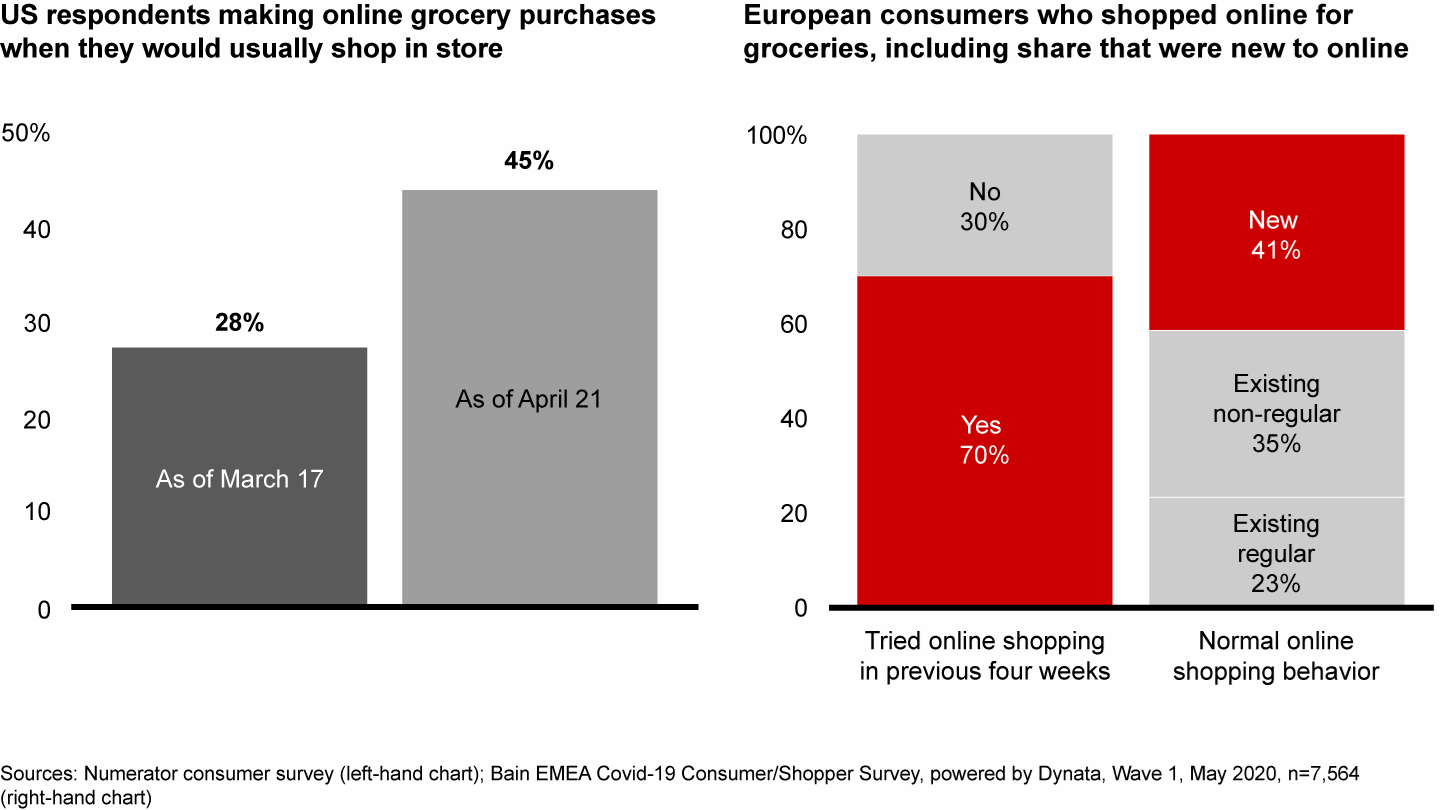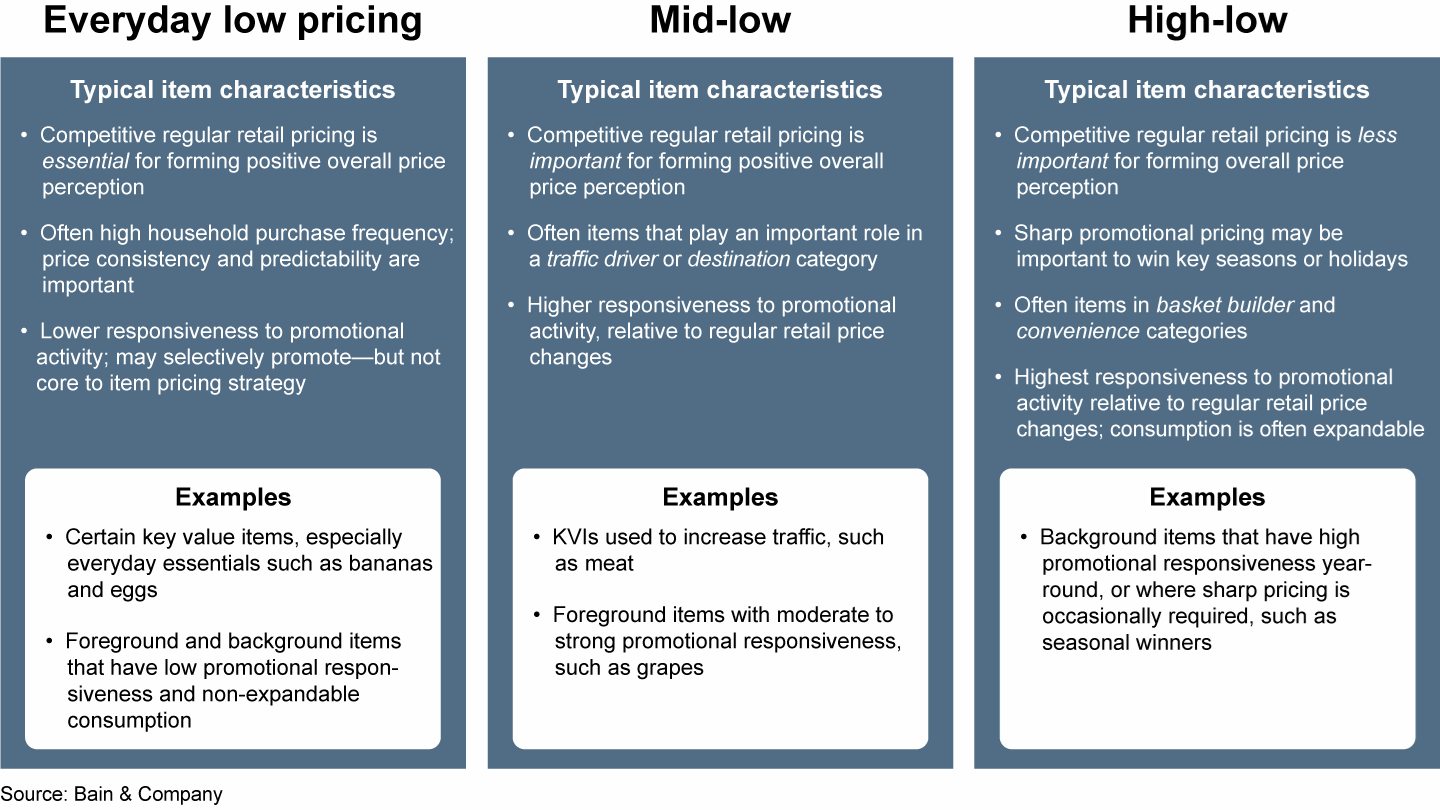Brief

Executive Summary
- Overuse of promotions has undermined their efficacy for many grocers, significantly affecting profitability and eroding consumers’ perception of value.
- The coronavirus crisis has dramatically shifted consumer shopping behaviors and forced a reassessment of tired promotion strategies based largely on historical patterns.
- The new realities call for a test-and-learn approach using the most recent consumer response data and machine learning technology: run near-in tests of price elasticities and promotions, then set price points, test, learn and repeat before a scale rollout.
- Effectively refocusing promotions can increase gross margin dollars by 2% through improvements in both volume and percentage margin, equivalent to a 20% improvement in operating margin dollars.
For years, most grocery chains and banners have relied heavily on promotions. This has been especially important for banners relying on a “high-low” pricing model, to compete with mass and discount players that typically rely on everyday low pricing strategies.
Promotional spending (the value of all discounts, deals and coupons) runs as high as 10 times operating profit for most high-low retailers. Yet as consumers habituate to promotions, those discounts lose efficacy. Grocers often have only a limited understanding of which promotions yield the highest return on investment, which ones barely break even and which lose money. Further, grocers frequently use promotions for the wrong purposes, such as meeting weekly sales targets or satisfying vendor funding requirements, rather than to achieve longer-term goals of building customer loyalty and conveying a strong sense of overall value. As a result, many grocers have been trying to improve the efficiency of promotions while also reducing dependence on them.

Macro Surveillance Platform
For more detail on the business implications of coronavirus from Bain’s Macro Trends Group, log on to the Macro Surveillance Platform. Learn more about the platform >
Covid-19 and the subsequent lockdowns are significantly affecting the grocery industry worldwide, beyond the toll on human health caused by the pandemic. The crisis has upended buying patterns:
- Demand increased temporarily due to pantry loading and restaurant closings, with shortages reducing price sensitivity.
- Customers consolidated shopping into fewer trips to fewer stores, so as to limit proximity with other people. For some locations, this meant a sudden influx of new and previously absent shoppers.
- Online shopping surged as many non-regular and store-only shoppers migrated online (see Figure 1). Bain & Company surveys show that many such consumers indicate they would be more likely to shop online in the future. Promotion strategies thus should incorporate the greater prominence of online ordering.
- More consumers have tried new brands, often as substitutes due to supply chain disruption. This serendipitous exposure to new brands could endure even after the pandemic abates.
- Many consumers have sought out lower-priced, value products due to employment disruptions.
More consumers have done their grocery shopping online, and many were new to online


At the same time, grocers’ costs are rising significantly:
- The cost of goods has spiked in certain categories due to supply chain disruptions, while some suppliers have questioned trade funding levels in the midst of major sales increases.
- Labor costs have risen as well, due to absenteeism caused by medical conditions, lack of childcare and quarantine. New safety equipment and protocols also reduce productivity.
- Greater use of online channels, which have high delivery and picking costs, are reducing overall profitability.
- Greatly increased store traffic has made it less efficient, and thus more costly, to set up the store, including special feature space and end-cap sets driven by short-term promotions.
Grocers cannot pass on most of these higher costs, fearing accusations of price gouging that would damage the brand. Instead, grocers should use this once-in-a-generation opportunity to reset customer expectations about promotions while also shoring up profitability for the long run. While grocers dialed back promotions during the pandemic, primarily because of acute operational challenges during the height of the initial demand surge, that is a temporary lull and value-conscious customers will be eager to see promotions return.
In our experience, effectively refocusing promotions can increase gross margin dollars by 2% through improvements in both volume and percentage margin, equivalent to a 20% improvement in operating margin dollars, for a typical midsize grocer.
Test, learn and test again
Given the changes in consumer behavior over the past three months, grocers no longer can rely on category managers’ intuitions or forecasting models that use a few years’ worth of purchasing data. Instead, the new realities call for a test-and-learn approach using the most recent consumer response data and machine learning technology. One can run near-in tests of price elasticities and promotions, then set price points, test, learn and repeat before a scale rollout.
When the results of such tests go quickly to merchants in the form of insights and recommendations, they can make informed decisions about promotions, rather than guessing about what is effective.
The experience of multiple banners illustrates the value of scrutinizing and optimizing promotions. For instance, base prices for one grocer had increased over time to become considerably greater than those of the low-priced market leader, with some categories reaching “insult” levels of 40% more. The banner simultaneously used promotions to drive sales, creating an unsustainable cycle of ever-higher base prices and dependence on promotions—a variation of high-low pricing that was “very high and very low.”
The grocer addressed this cycle in two ways. First, it selectively reset base prices by identifying known value items (KVIs), using a novel machine-learning-based approach to find those items that were most important for creating price perception, such as baby formula. This analysis led the banner to reduce the regular retail price of many KVIs, creating a mid-low pricing model, while the less critical items could remain high-low (see Figure 2).
At another grocery chain, after extensive elasticity modeling off of past promotions, the grocer began to shift promotional spending away from those categories where promotions were least productive and toward those that drove true benefits. It stopped promoting one brand of muffins, for example, moving instead to everyday low pricing, because of the low profit margin and high purchase frequency.
“Mid-low” pricing may be appropriate for some categories


In sum, these grocers used the full range of promotional models to identify the right items to promote, with the right price at the right time, and with the best use of advertising support. Results to date have been impressive: a 5% to 10% improvement in the return on promotional spending for several center-store and fresh categories, and better price perceptions reported by customers.
This is the time for bold steps, not incremental tweaks to what a store did last year. Ruthlessly eliminating low-performing promotions, to reinvest the savings in the items customers really care about, will allow grocers to both hold the line on profitability and earn more loyalty from the shoppers now flooding their stores.

Coronavirus
The global Covid-19 pandemic has extracted a terrible human toll and spurred sweeping changes in the world economy. Across industries, executives have begun reassessing their strategies and repositioning their companies to thrive now and in the world beyond coronavirus.